Reimagined the caregiving experience to improve recruitment and retention
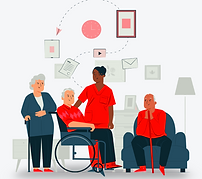
Problem
The client was facing a 97% candidate attrition rate through recruitment and initial employment, creating an estimated revenue loss of $700M.
My Role
As a Design Researcher, I was responsible for participant recruitment and logistics, conducting diary studies and interviews with caregivers, synthesizing data to develop behavioral insights and actionable jobs-to-be-done.
Outcome
An industry-pioneering solution that scales care, and optimizes candidate application, recruitment, and client assignment to improve retention.
Overview
Client:
Bayada Home Healthcare
Duration:
September 2022 - December 2022
Methods:
Generative Research, Design for Happiness, Journey Maps, 0-1 Product Development
Tools:
Research & Recruitment: Respondent.io, UserInterviews, Grasshopper Text messaging, Google Meet
Data Collection & Analysis: Rev, Miro, Google Sheets, Google Slides
Design & Video: Figma, Adobe Premiere Pro, Adobe Media Encoder
Team:
Project Lead (2), UI/UX Designer, Design Researcher (4)
Context
$160B
Estimated Home Healthcare Service Market in 2030
76%
Patient turnover rate in 2021, post pandemic
70%
Clients' patients had to be rejected due to caregiver shortage
Research Goals

Responsibilities
-
RESEARCH
-
Competitive benchmark
-
Participant recruitment
-
Diary study (Qualitative, unmoderated)
-
In-depth interviews (Qualitative, moderated)
-
-
SYNTHESIZE
-
Data analysis and share-outs
-
Behavioral insights
-
Jobs-To-Be-Done mapping
-
-
INNOVATE
-
Facilitating co-creation sessions
-
Storytelling through videos
-
Cross-functional collaboration for solution development
-
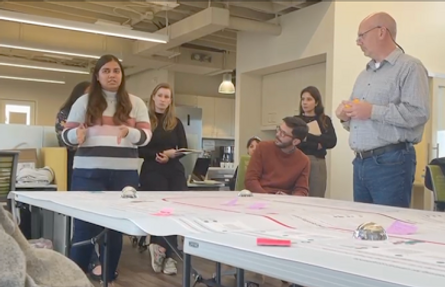
Methodology
RESEARCH
-
Competitive Benchmark:
-
Conducted secondary research to map the client's current application experience against 35 solutions, from direct competitors to adjacencies and outsiders.
-
This provided the creative team with a broad perspective on diverse user experiences and designs.
-
-
Diary Study:
-
Method: Sent interactive journals with questions as Google Slides.
-
Goal: Sensitizing the participants to the Design for Happiness methodology, and understanding the participants' context for potential drill-sites during the interviews.
-
Pivot: Adapted by text messaging participants without smartphones/laptops with questions.
-
-
In-Depth Interviews:
-
Number of Interviews:
-
25 Office Staff including Recruiters, Client Service Managers
-
15 Caregivers including nurses and home health aides
-
3 Clients and their family members
-
-
Focus: Uncovering users' goals, needs, and experiences regarding recruitment, onboarding, assignment of caregivers, and early days at work.
-
SYNTHESIZE
-
Behavioral Insights:
-
Distilled the core insight themes encompassing behavioral drivers, barriers, and connections among participants, revealing the pivotal role of office staff in shaping the caregiver experience and scaling quality care.
-
-
Journey Map:
-
Mapped the intents and experiences of the caregivers, office staff, and clients during field staff recruitment, onboarding, and early days at work, highlighting the pain points, bliss points, workarounds, and wishes.
-
-
Jobs-To-Be-Done (JTBD) Map:
-
Converted friction points into 14 actionable JTBDs for caregivers and office staff, and evaluated the tools ecosystem for usefulness and ease of use.
-
INNOVATE
-
Storytelling through audiovisual artifacts:
-
Created engaging videos with user quotes from recorded sessions to foster empathy among stakeholders, humanize users, and ensure their voices were heard.
-
-
Co-Creation Sessions:
-
Participants: Client’s C-suite and stakeholders.
-
Goal: Present research findings and proof of concept, to align stakeholders on priority JTBD for implementation.
-
Output: Developed an innovation roadmap based on collaborative efforts with the client.
-
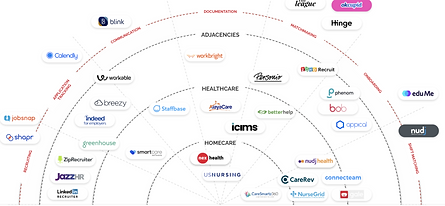

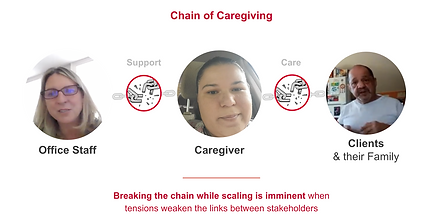



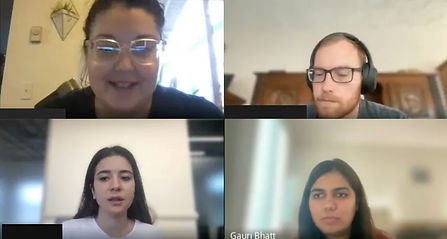
Outcome
We built a product that scales compassion and entrepreneurship, focuses on high touch where it matters, and uses high-tech everywhere else. The new product will radically enhance the user experience of key stakeholders - caregivers and clinicians as well as office staff - while wrapping the complexity of existing tools and systems behind.

Impact
The first product launch aims to significantly streamline the recruitment process, reducing
-
time to schedule an interview from 3 days to 3 minutes
-
interview-to-hire timeline from 3 weeks to 3 days
This efficiency upgrade is projected to result in the billing of an additional 5,500 employees, contributing to an estimated revenue increase of approximately $100 million.
Reflections
-
I learned the importance of flexibility and adaptability in research methodologies, especially with diverse participant groups with varying access to technology.
-
I recognized the necessity of proactive communication and iteration in participant recruitment.
-
This project enhanced my ability to anticipate delays and cancellations, keep the team informed, and prepare additional candidates as backups.
-
Ensured adherence to the interview schedule and gathered comprehensive data through proactive planning.
